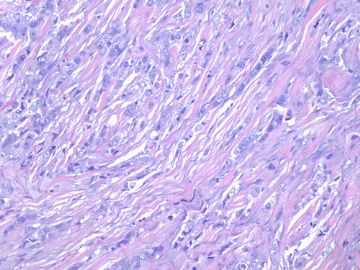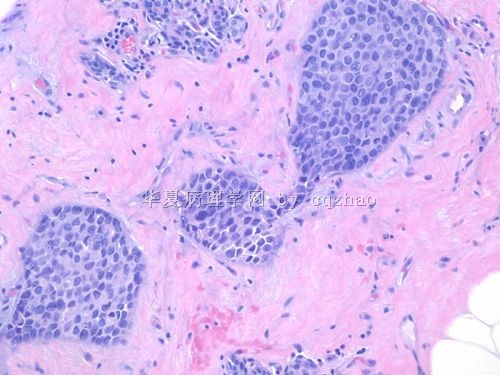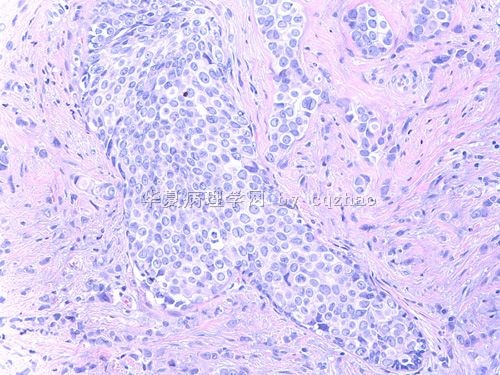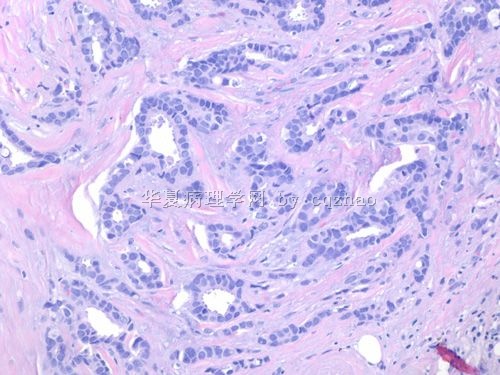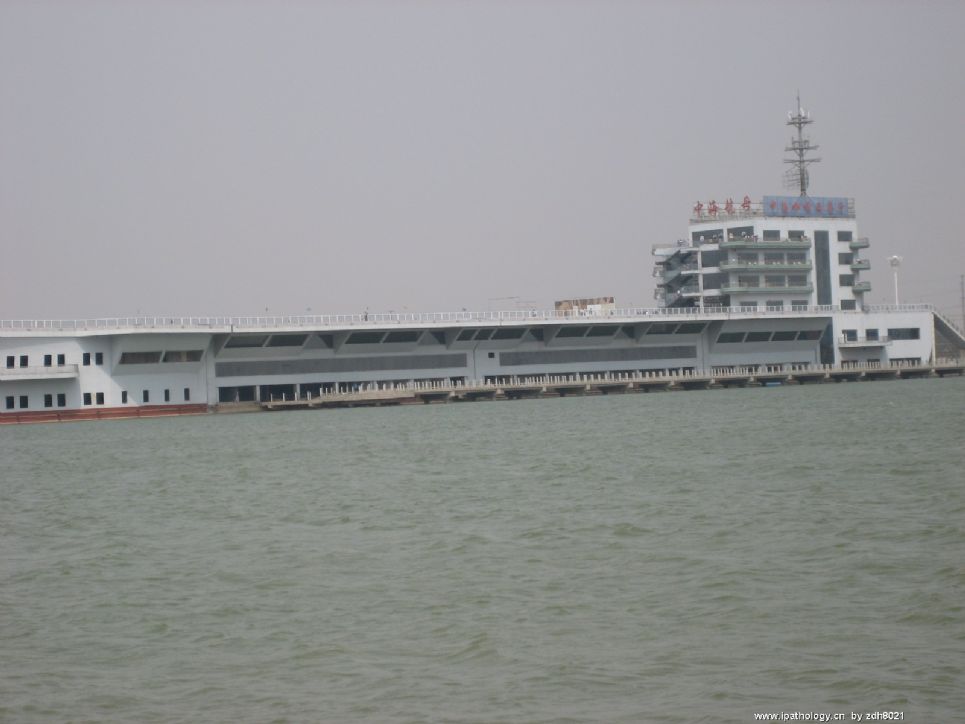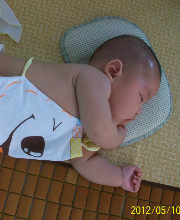| 图片: | |
|---|---|
| 名称: | |
| 描述: | |
- B2280小叶癌with focal 小管structure(cqz-28)(11-6-09)
| 姓 名: | ××× | 性别: | 年龄: | ||
| 标本名称: | |||||
| 简要病史: | |||||
| 肉眼检查: | |||||
50 岁妇女乳腺肿瘤2.5cm
. Fig 1-4. most areas of the tumor.
-
本帖最后由 于 2009-12-16 11:07:00 编辑
相关帖子
- • 女性/45岁 右侧乳腺肿块 诊断?
- • 左乳肿块,新加免疫组化
- • 乳癌?求助
- • 乳腺肿瘤
- • 够小叶癌吗?
- • 女 48岁 左侧乳腺肿块10余天
- • 女性 60岁乳腺肿块 乳腺癌分型
- • 乳腺穿刺
- • 右乳肿块
- • 右乳腺肿块穿刺活检,新加手术后图片
-
lanyueliang 离线
- 帖子:679
- 粉蓝豆:11
- 经验:1424
- 注册时间:2008-11-12
- 加关注 | 发消息
-
本帖最后由 于 2009-11-09 19:33:00 编辑
This is one of my cases of today. Take some photos to share with you if you are interested.
The photos 1-4 represent the 2.5 cm tumor. There are several focal lesions admixed with the tumor.
Question:
1. what is the dx of tumor (fig 1-4)?
2. what is dx of tumor nests in the area 2?
3. What is dx of tumor nests in the area 3?
4. What are the focal tubular structures in the area 4?
Good weekend for every one. cz
abin译:这是我今天的一个病例。上传一些照片分享,如果你有兴趣。
图片1-4代表2.5cm肿瘤。有数个病灶与肿瘤混杂。
问题:
1、肿瘤诊断什么?(图1-4)
2、第2个区域的肿瘤巢诊断什么?
3、第3个区域的肿瘤巢诊断什么?
4、第4个区域的局灶管状结构是什么?
祝大家周末快乐!cz
-
本帖最后由 于 2009-11-09 16:57:00 编辑
对于Dr. zhao提出的问题我个人的看法是:
fig 1~4是浸润性小叶癌的图像。
area 2 如果单独看,我认为是低级别导管原位癌,也有可能是小叶癌,需免疫组化鉴别。
area 3 是低级别导管原位癌伴有浸润性小叶癌
area 4 是小管癌的图像,如果这种结构所占比例较少,则可以忽略不计,如果大于50%可以诊断浸润性小管小叶癌,是混合性小叶癌的一种。也有人认为是一种管状小叶癌。
不知是否正确,期待Dr. zhao的讲解。

- 博学之,审问之,慎思之,明辨之,笃行之。
-
simple1014 离线
- 帖子:68
- 粉蓝豆:1279
- 经验:237
- 注册时间:2007-11-29
- 加关注 | 发消息
| 以下是引用cqzhao在2009-11-10 1:37:00的发言:
1. Are the tumor nests in Area 2 and area 3 the same? 2. Is the tublular component in area 4 lobular or ductal nature? |
翻译:
1、区域2和区域3的肿瘤巢性质相同吗?
2、区域4中的小管成分是小叶性质还是导管性质?
回答:
1、区域2和区域3的肿瘤巢性质略有不同:区域2细胞密度比区域3更高,粘附性更好,可能是DCIS性质。习惯了用一元论解决问题,没有细看细想。需要免疫组化区分。
2、区域4中的小管成分是导管性质。小管癌属于分化好的导管癌。
因此这个病例可能有两种成分:小叶癌(浸润+原位)和导管癌(浸润+原位)。



